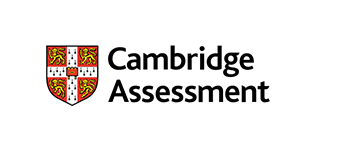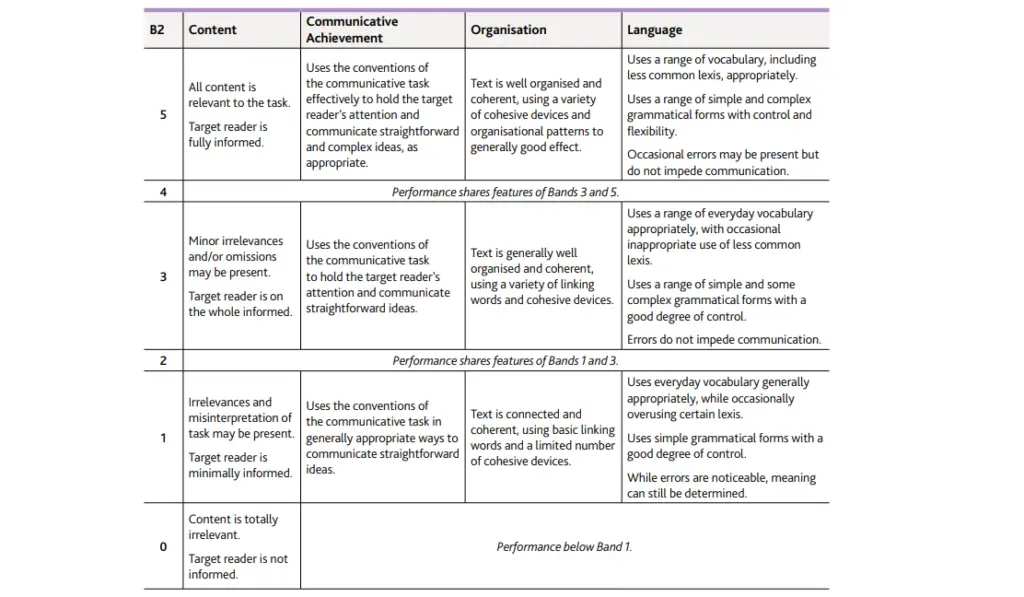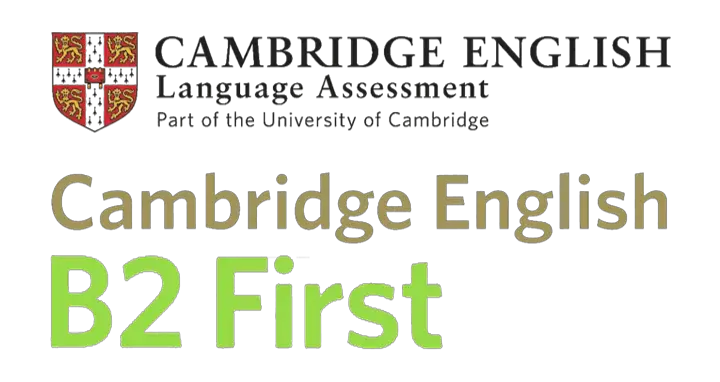If you’re preparing students for the Cambridge B2 First (or First for Schools) exam, the writing part is super important. It’s the area where you can have the most impact as a teacher. My students have great success thanks to the strategies I’ve developed that almost guarantee good marks.
But it’s all a bit intimidating to begin with. There’s lots to consider from the perspective of a teacher unfamiliar with the Cambridge exam format.

That’s what this article is all about. I’ve prepared students for the Cambridge B2 First exam since 2016, and I’ve developed a robust method for getting results. And here I’m going to share it.
First of all, we’ll look at the format and structure of the writing exam. Next, we’ll analyse the assessment criteria and think about what students need to do to score the most points. Following that, we’ll talk about how to use model examples to teach and assess. At the end, I’ll run you through the 3-step writing process.
For a more general look at how to teach writing to EFL/ESL students, check out my Big Guide to Teaching EFL/ESL Writing: 16 simple steps.
Before we get started, I highly recommend you download the official Cambridge English B2 First Handbook. It contains a wealth of information, some of which I’ll be referring to here, along with my own strategies. Download it from this link. Page 29 is the start of the writing section.
So let’s get to it!
What is the format and structure of the Cambridge B2 First writing exam?
What you need to know:
- The exam lasts 1 hour and 20 minutes.
- Candidates complete 2 writing tasks (roughly 40 minutes each).
- Candidates must complete one essay, plus one other task, choosing from a variety of options.
- All tasks should be answered with 140-190 words.
- Both tasks contribute 50% to the overall writing score.
- Each writing task has a short written prompt which tells the candidate what topics to write about.
The essay is always the first question, and is compulsory.
After the essay, candidates get given a choice of three writing tasks (four in First for Schools). There are several possible tasks that could come up, depending on which exam you take. They are:
- Letter (usually formal)
- Email (usually informal)
- Review
- Article
- Report (First only)
- Story (First for Schools only)
- Essay (First for Schools only)
You can’t predict which writing types will come up. However, as candidates can choose from the selection, it means they don’t have to prepare for every single type.
In fact, in my classes, we never prepare for the report (or the story in First for Schools), instead just focusing on the first four from the list.

I also suggest students avoid the formal email/letter, because it can be tricky to remember the conventions and phrases like “yours sincerely” or “yours faithfully”. We prepare for it, just in case, but I advise choosing an informal email, review or article if possible.
Eliminating some of the tasks like this allows students to ace the ones you do prepare, and it doesn’t overwhelm them with too much information. Additionally, the ones we spend most time on (email, review and article) all use informal language, which is generally easier.
How is the Cambridge B2 First writing exam assessed?
If you head to page 36 of the B2 First Handbook, you can see the assessment scale used by examiners. In reality, they have a much more complex rubric – this is just the one they give us mere mortals to make sense of.

Take a look at the four categories at the top: Content, Communicative Achievement, Organisation and Language. Each is marked from 0 to 5, giving a total score out of 20.
When you combine both tasks together, you get a score out of 40. The global exam pass mark is 60% (24/40), but we want to aim for higher than that to make up for weaker sections (like the Use of English).
You may be surprised at how little vocabulary and grammar are considered in assessment. They’re combined in the Language category, making up just a quarter of the overall grade. So what are all the other points for? That’s where things get interesting.
- Content = answering the question and staying on topic.
- Communicative achievement = using the correct register (formal/informal), tone and conventions for the specific type of task.
- Organisation = use of paragraphs and connectors to present information coherently.
- Language = range, complexity and accuracy of grammar and vocab.
What I really like about this is you can quickly train your students to get high scores in Content, Communicative Achievement and Organisation.
This can make up for deficiencies in grammar and vocab. Of course, they need to reach a certain level of ability with the language, but mistakes here and there don’t ruin their grade.
Now I’m going to explain how you can get your students up to a 4 or 5 in those three categories.
Content – answering the question
The Content category boils down to answering the question fully. Each writing task has a prompt outlining what the candidate should write about. Candidates should write about all of them.
Now, it’s not quite as easy as it sounds. Students need to stay on topic, and cover each of the required points in sufficient detail that the “target reader is fully informed”. That means supporting opinions with examples and providing necessary details.

It also means avoiding anything that’s irrelevant to the task. Lots of students find a maximum limit of 190 words difficult to stay under, because they start writing about off-topic ideas, or going into far too much detail on one thing.
There’s a balance which students will find after a few rounds of practice. Later on, we’ll talk about paragraph structure, and how it can help students stay on topic and write the correct amount.
Going over or under the 140-190 word limit will dramatically reduce this score. Make sure that doesn’t happen.
Communicative Achievement
Getting your point across in a way that’s suitable for the target audience is a vital skill in real life, and Cambridge examiners assess it with Communicative Achievement. There are a few aspects that are considered:
- Register (formal/informal) and tone. A job application letter should contain serious, formal language, while an email to a friend should be jovial and informal.
- Conventions of the writing task. Essays should follow a standard pattern: introduction, arguments, conclusion. Reviews should phrases for recommending things. Emails and letters should have appropriate greetings and sign offs (e.g. I look forward to hearing from you soon).
- Clarity of ideas. This is how well thought out and communicated ideas are. If they don’t make much sense (regardless of how good the language is), the reader will have trouble understanding.
- Reader engagement. Does the writing keep readers interested? This is especially relevant in articles and reviews, where the use of rhetorical questions is strongly encouraged.
As a teacher, you need to ensure students know how to write formally and informally (contractions, colloquialisms, exclamation marks, etc.). You should also teach them some conventional phrases for different writing types.
Not knowing conventions and register is one of the biggest issues EFL/ESL students have when writing. To learn about other common difficulties, read my list of 9 Writing Problems For EFL/ESL Students & How to Solve Them.
Organisation
Paragraphs and connectors. Get these two things right, and students will score top marks.
In almost every writing task, students should write 5 paragraphs. There’s an argument for writing 4 in a review (and occasionally an article), but in all others, there should be 5 without fail.
Typically, the structure looks like this:
- Introduction/greeting
- First topic
- Second topic
- Third topic
- Conclusion/sign off
In a review, the third topic (given in the prompt) is to suggest whether the reader should buy the thing they’re reviewing or not. In most cases, that’s a variation of a conclusion, so paragraphs 4 and 5 can be merged.
Paragraphs should be of roughly equal length (30-40 words). The exceptions to this rule are letters and emails where the greeting and sign off might be a little shorter than the three topic paragraphs in the middle.
They should also be clearly separated by a line space. And each paragraph should stay within its bounds, not digressing onto other topics, or talking about something totally irrelevant. The 30-40 word guide is a good way to ensure students write enough, but not too much.
Paragraphs aren’t disconnected. To get maximum points in Organisation, students need to use connectors.
Connectors are great. You don’t have to learn hundreds of them to be successful in the writing task. Learning one or two for each occasion is enough to stand out.
Here’s a cheat sheet showing some of the best connectors and conventional phrases.
Students should aim for at least 5 quality connectors in each task (not including simple ones like “and” and “but”).
However, be careful with register. A connector like “moreover” is very formal, so would be out of place in an informal email to a friend. It would be better to use “what’s more”.
When you teach connectors, put them on a scale of informal-formal, so students can use them appropriately and get even more points in Communicative Achievement.
Using model examples to teach and assess
The biggest mistake I made when starting out teaching the B2 First writing exam, was setting tasks to students without giving them a model example to work from. They went in blind. I assumed they would absorb all the information I gave them and apply it without issue. I was wrong.
The problem is, theory and practice don’t always go hand-in-hand in writing tasks. I soon learned that students struggled to start from a blank piece of paper with so many thoughts and ideas in their head.

When I started giving them model examples, this all changed. They could use the example as a basis and modify it in their own way. This isn’t copying. It’s imitation. It’s a necessary step for students to gain confidence.
For each writing task I set, I take the time to do it myself, trying to show the best way of achieving maximum marks. Over time, I remove the examples and instead just give them a rough plan, then finally, they go it alone.
Head to page 39 of the B2 First Handbook and you can find lots of great examples with notes on how they were assessed. As a teacher, this is enlightening. But I wouldn’t use these as model examples for your students. They contain mistakes, and some of them are low quality.
Instead, you can discuss them with your students. Analyse them together, focusing on all four assessment criteria, not just grammar and vocab. Most students start off thinking it’s an error correction exercise, so make sure they’re paying attention to Content, Communicative Achievement and Organisation, too.
You can share the assessment notes as well, pointing out what was good and what wasn’t.
Then, when students write their own work, they’re informed of how they’ll be assessed, and you can refer to the criteria to help them improve.
The 3-step writing process
I teach my students a 3-step process for writing tasks.
- Identify and plan (5 minutes)
- Fast draft (15 minutes)
- Edit and improve (15 minutes)
The whole thing takes 35 minutes. Sure, the time limit is 80 minutes for two tasks, but it’s good to build in some margin for error, and if students finish early, they can spend a bit more time editing and improving.
Here’s how to go through the steps, using an essay question from the official Sample Paper 1.

Step 1: Identify and plan
In this stage, we identify the type of question, topics to cover and consider what register, tone and conventions are needed. Then we’ll make a quick plan of paragraph structure.
Identify: This is an essay. That means it’s going to be formal/neutral, but personal pronouns (I, we) are allowed.
Opinions are key, so I should think about the language used to express them. Reasoning is also important, so causal connectors are going to be vital. So, too, are sequencing connectors to move from one idea to the next.
I know there are three topics to talk about: transport; rivers and seas; and one I choose. Let’s go for air quality.
Plan: I’ll take a few minutes to write out this rough plan.
- Introduction – global problem, express my opinion on chances of a solution
- Transport – vehicles in cities, air travel, moving products across the world, important for the economy
- Rivers and seas – plastic waste, harm to animals, beaches ruined, hard to reduce plastic use
- Air quality – lower life expectancy, cancer and other diseases, efforts made in some cities
- Conclusion – express my opinion in depth, everyone needs to work together
I might also take the time to brainstorm and note down some relevant and specific vocabulary, such as waterways, freight, and asthma.
Step 2: Fast draft (15 minutes)
In this step, students should complete the task from start to finish without spending too long thinking about it. If they take ages pondering over every choice of word, they’ll run out of time and confidence.

Getting words down is imperative. Even if they’re not the best quality, and there are mistakes, it doesn’t matter – those things will be fixed later.
Using the plan, students always know what to write. They have a structure to follow, and can balance the length of their paragraphs appropriately. The pen should be on paper for the majority of these 15 minutes.
Step 3: Edit and improve
This is the step that most students will neglect. They might do a cursory check of their work, but, for me, it’s the most important part. It’s all about eliminating errors and taking things up a level.
First of all, it may be worth students writing everything out fresh and later crossing out the first draft. That means they won’t have a sheet full of messy corrections.
Secondly, they should approach the editing process one stage at a time. Here is the best order:
- Big picture – paragraph size, staying on topic, word count. Visually, students can see the balance of paragraphs, and can spend a short time counting their words to make sure they’re within the limits. They should also cut out anything that’s off topic and ensure ideas are well developed.
- Task fulfilment – register, tone, conventions. In this stage, students focus on Communicative Achievement. They should go through and eliminate/add contractions and colloquialisms to make their work fit the correct register. Then, they should make sure they’ve used appropriate conventions and phrases for the task type.
- Nitty gritty – this is where we get to word-level edits. Correcting grammar and spelling mistakes is important. But it’s not just correcting, it’s improving. Students should search for places where they can add more specific, advanced vocab, and try to include higher-level grammatical structures.
One last thing to consider, for some students, is quality of handwriting. The test is done in pen and erasing tools like tipex aren’t allowed, so if it’s left as a big mess, examiners won’t be able to mark it. This may mean writing it out again neatly, or just going over a few words to make them clearer.
Giving feedback on writing tasks
Feedback for writing tasks is critical to students’ progress. But without a careful strategy, you can end up doing more harm than good.
The key is to be focused. Don’t try to correct and improve everything at once, because it’ll get overwhelming.
For each round of practice, focus on the following things.
First, make sure students are able to identify the task type and write about the correct topics given the prompts. Next is to think about paragraph structure and balance. Then you can move on to things like register, tone and conventions. After that, connectors.
Finally, when students have got the building blocks in place, you can hone in on grammar. That’s not to say you should ignore grammar until that point. If there are serious, beginner-level mistakes, point them out. Just avoid highlighting every minor error.
I can’t cover all the details of assessing writing tasks in this article. However, I’ve written an extensive guide on the topic which you should read to find out more: Best Method for Correcting EFL/ESL Writing: 9 Step Guide.
Conclusion
It’ll take five or six attempts for students to really apply all the concepts and strategies. Be patient.
Remember to start off with lots of support and slowly give students more independence. Use the assessment criteria as a teaching tool. Have students think critically about their own work as well as others, and search for ways to improve.
And don’t ignore grammar and vocab completely. They’re still a big part of it, and you need them to support the other aspects. But it doesn’t have to be perfect. In fact, the assessment states students will be rewarded for attempting advanced-level grammar and vocab, even if they don’t get it exactly right.
Hopefully, you can see how much of an impact you can have on your students’ chances in the writing exam. Without this knowledge, even the best of writers can lose marks. If you get the writing spot on, it can make the difference between pass and fail in the overall exam mark!







